Have you ever wondered how to make a white noise filter sweep? Not only is it one of the most commonly used transitions in EDM music, it’s also simple to create using just about any synth. In this tutorial, we’ll make white noise filter sweeps using Xfer serum.
Here’s how to make a White Noise Filter Sweep
- Activate your synth’s noise generator
- Disable all other oscillators
- Load white noise into the noise generator
- Route the white noise through a low pass filter
- Adjust the amp envelope by increasing the release time
- Finally, automate the opening of the cutoff filter so it goes from dark to bright.
- Add filter resonance to taste
How to Make a Swooshing Sound in Electronic Music?
The sweeping white filter sound is commonly used in house, EDM, dubstep and synthwave music. Defined as an ever-increasing swooshing sound that is made up of white noise, the sound often adds a jolt of excitement to any track. Its primary use is to highlight a section of a song. For instance, producers will insert a sweep at a lead-up to a chorus.
So how are white noise filter sweeps made? Initially, white noise exits a noise generator and then makes its way to a lowpass filter. The audible sweeping effect that you hear is the result of the cutoff gradually sweeping through the frequency spectrum allowing higher frequencies to pass through. This results in a sweeping sound we’ve all come to recognize.

How to Make a White Noise Filter Sweep in Serum?
Here’s how to make a white noise filter sweep. First, load up an instance of Xfer SERUM.
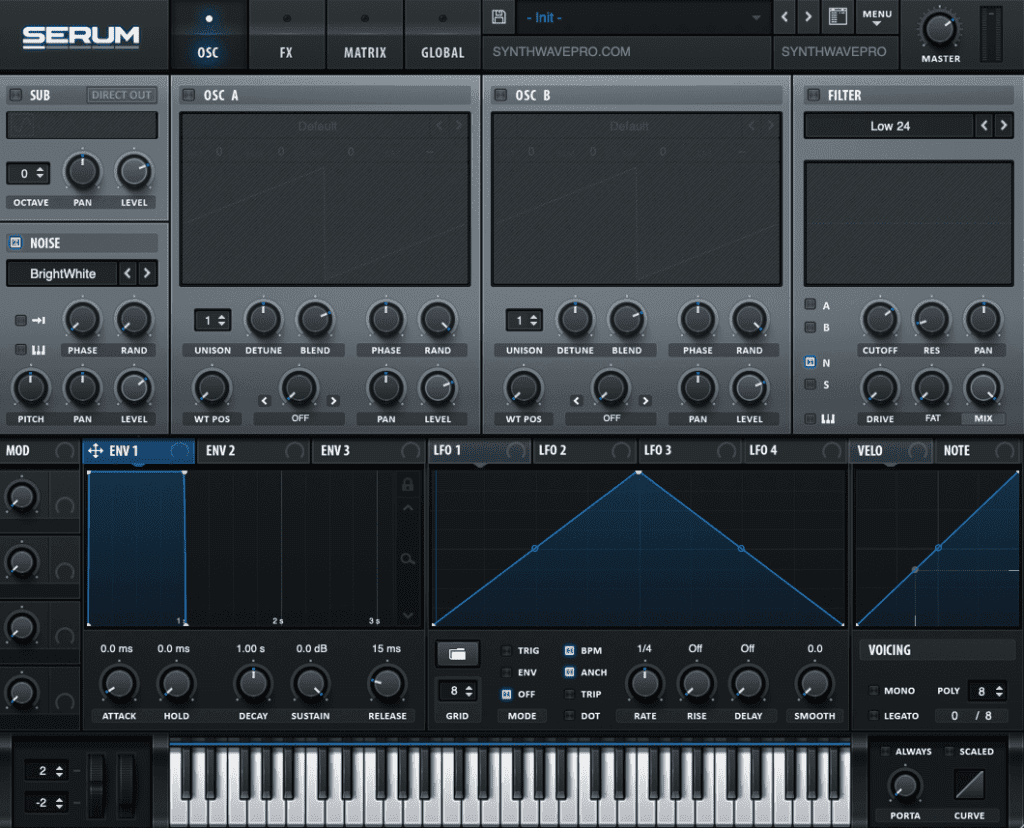
Next, disable oscillator 1 & 2 and enable Serum’s noise generator.
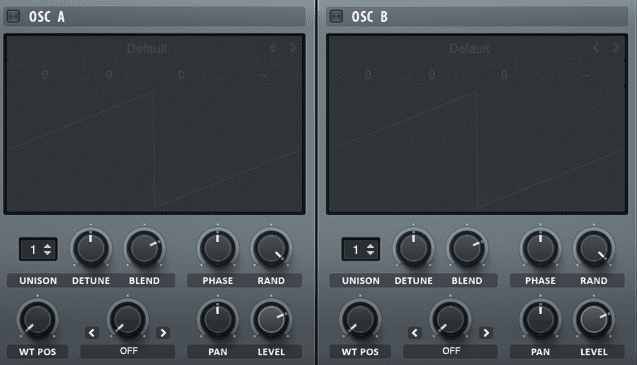
In the noise generator’s menu, be sure to choose BrightWhite noise as a source. It is found in the Analog menu. Adjust the noise generator’s volume control to taste and proceed to route it to the Serum’s filter by enabling the filter module’s N (noise) button.
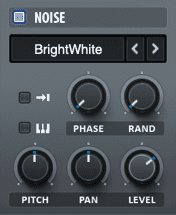
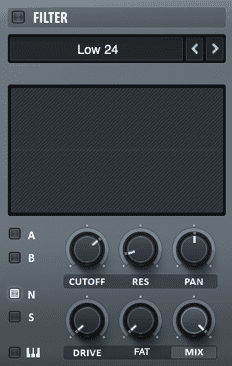

What Filter Type to Use For White Noise Filter Sweeps?
In the filter module, select a low pass filter. You can choose any lowpass filter with any slope you desire. Serum’s lowpass slopes are 6, 12, 18 and 24. As is the case with lowpass filters, the lower the slope value, the brighter the overall sound exiting the filter’s module.
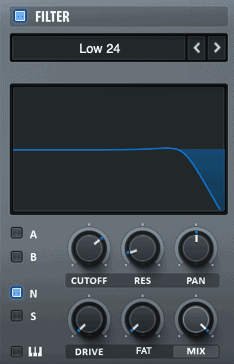
The next step to creating white noise filter sweeps is to increase the resonance. The resonance accentuates the filter cutoff’s point so the more pronounced the resonance, the more audible the effect becomes when the filter sweeps from bottom to top.
The final step for creating a filter sweep is to adjust the amps envelope or ADSR (attack, decay, sustain, release). Here’s a quick explanation of the various stages of an envelope.
- Attack – Time it takes for the sweep to reach its loudest
- Decay – Time it takes to go from the attack stage to the sustain stage
- Sustain – Determines the volume of the sweep while the MIDI note is being played
- Release – Time is takes for the volume to reach silence once the note is no longer held
How Amp Envelopes Shape Sound
Now that we understand the stages of the amplifier’s envelope, let’s program its ADSR values. We can use Serum’s env 1 for this.
For a gradual rise in volume, increase the amp’s attack to 600 ms. This will give us a slower rise. For a quick rise in volume, reduce the attack time to lower values.
Next, adjust the amp envelope to accommodate a long release. This ensures that the white noise sweep won’t come to an abrupt end once the note is no longer held. In other words, a release time of 1.25 s ensures a more gradual and natural decrease in volume.
Now for the fun part.
Once our amp’s envelope has been set, it’s time to automate the filter’s cutoff. In your favorite DAW, input any note into a MIDI clip. Ensure that the single MIDI note is sustained for at least a count of four beats. Next, automate the filter cutoff’s gradual rise just like the diagram below.
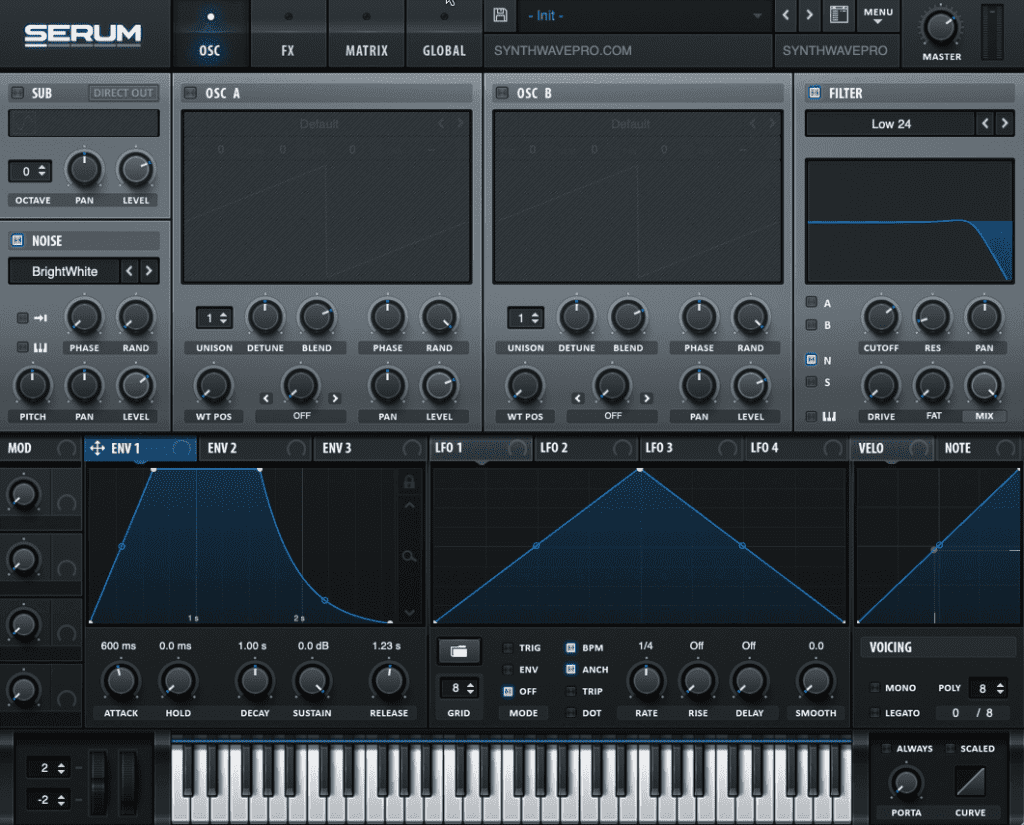
You can also automate the movement of the resonance so that when the filter sweep is in its lowest position, the resonance remains moderate. As the filter cutoff gradually sweeps through the frequency spectrum, be sure to increase the filter’s resonance.
How to Use White Noise Filter Sweeps In Synthwave Music?
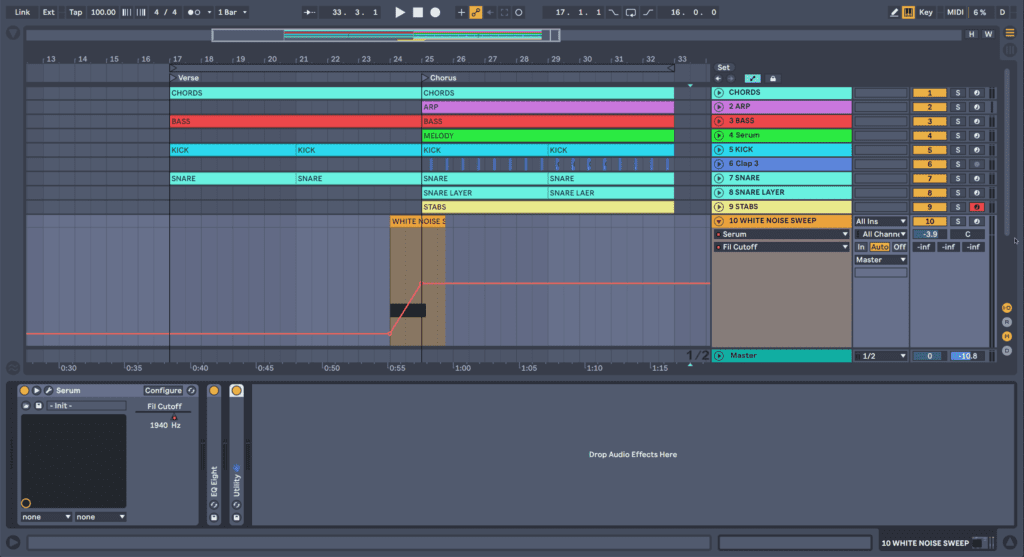
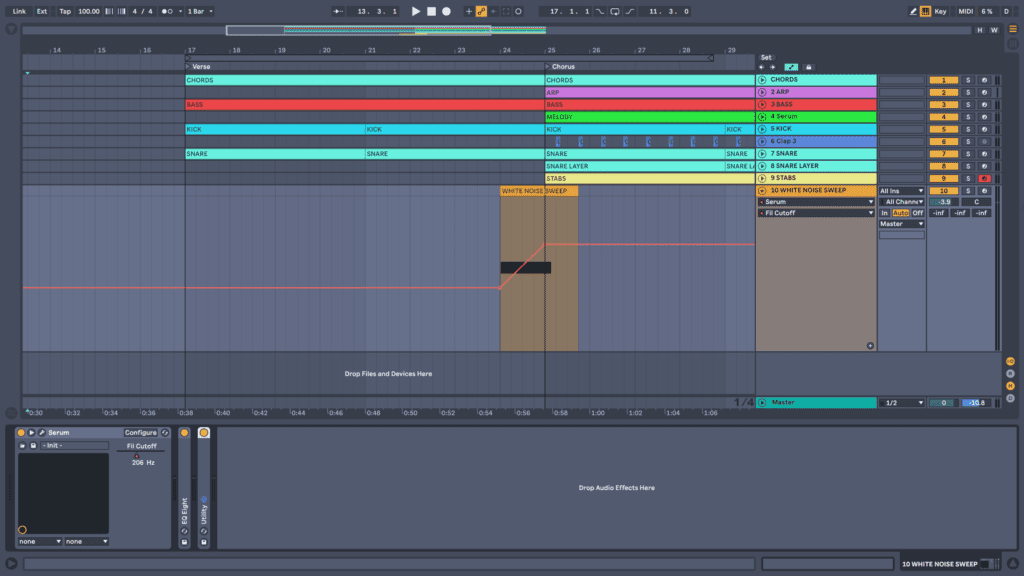
Now that we know how to make a white noise filter sweep, here are few things to remember. A little goes a long way. There’s no need to insert sweeps for every bar. Remember to insert them during a songs verse to chorus transitions. Moreover, milder (less brighter) white noise filter sweeps can be used to highlight the introduction of an instrument eg, synth bass. To make a darker white noise sweep, simply reduce the range of the cutoff filter so it doesn’t open to include higher frequencies.
Choose other noise generating sources. In fact, pink noise offers a slightly dark sound. In pink noise, each octave interval carries an equal amount of noise energy.
Avoid making overly bright white noise filter sweeps. Too much high frequency content in a white noise filter sweep is harsh on the ears so be careful. Use an equalizer to tame harsh frequencies.
Recent Posts
The Synthwave Song Writing Start to Finish Guide: Getting That Warm, Analog Sound In the Box
If you’re making synthwave, you’ve probably fallen in love with the sound of the 1980s:Warm synths, punchy drums, saturated tape textures, and a glowing analog aesthetic that feels nostalgic and...
What’s the Most Frustrating Part of Making Music And How to Overcome It
Music creation can be one of the most rewarding forms of self-expression. But let’s be honest—it can also be maddening. That moment when inspiration strikes… only to be blocked by technical...

